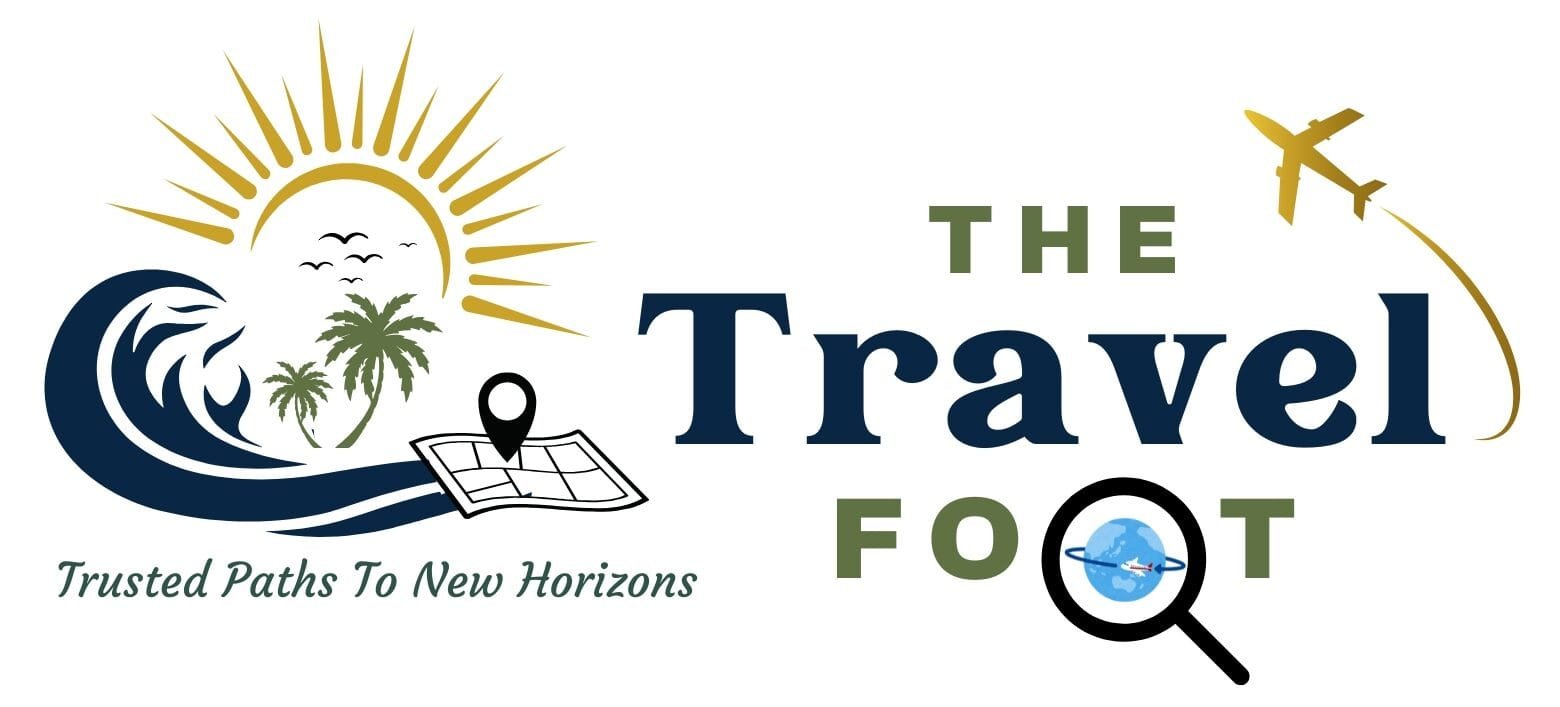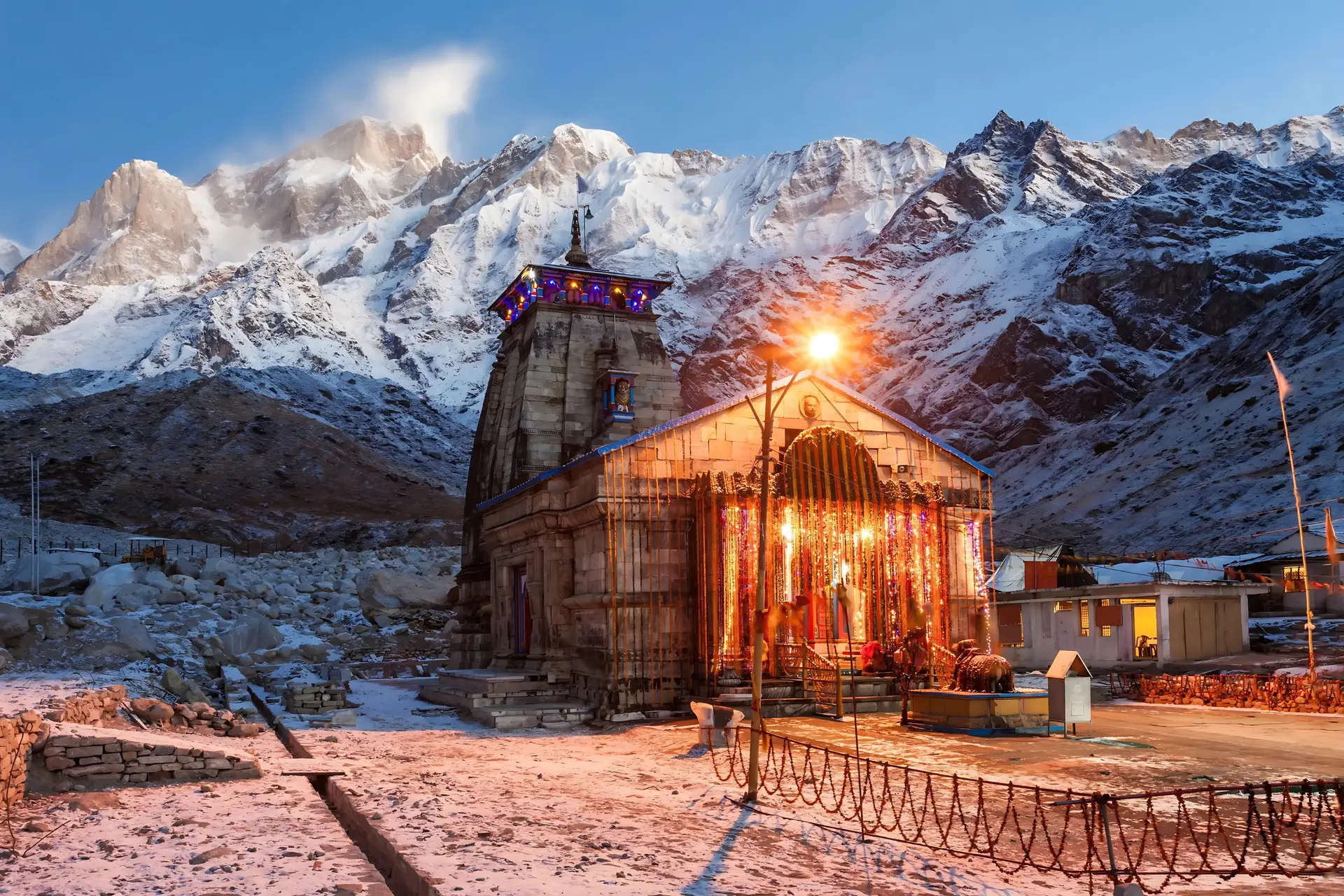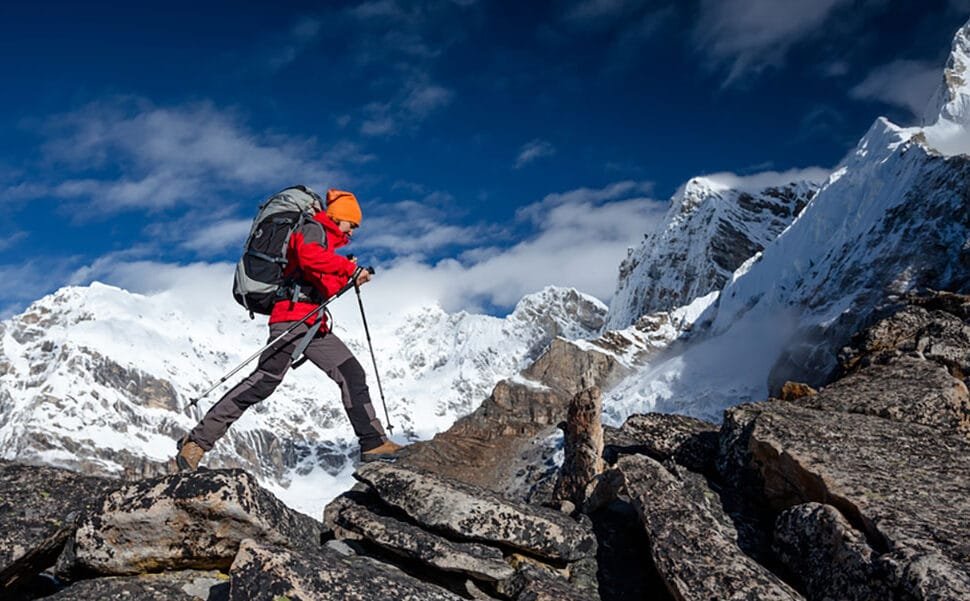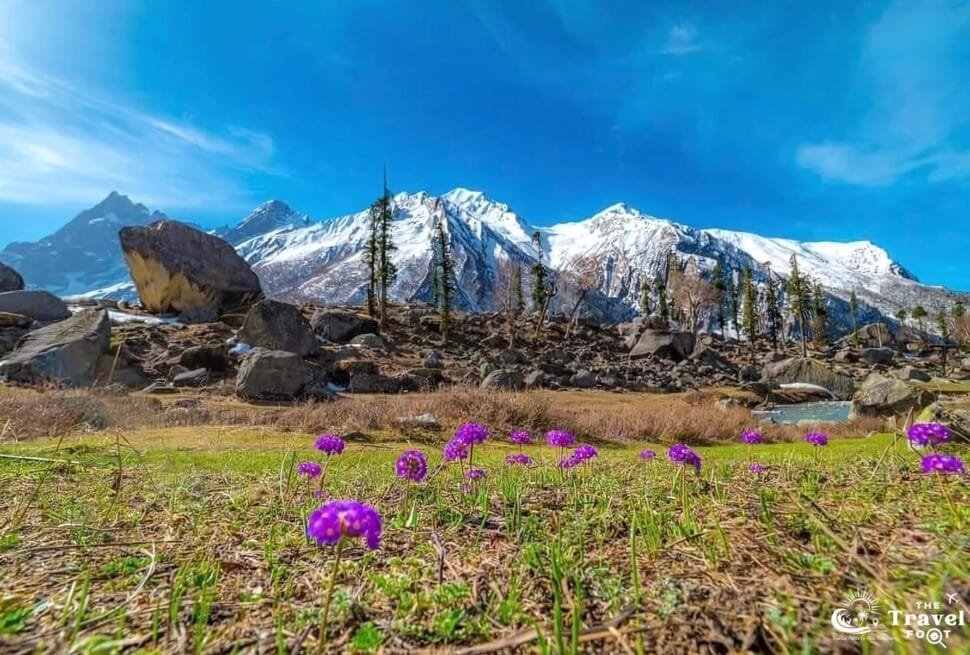The Char Dham Yatra, a highly revered pilgrimage in India, annually attracts numerous worshippers. This sacred journey leads devotees through the four esteemed temples of Yamunotri, Gangotri, Kedarnath, and Badrinath in the spectacular Garhwal Himalayas of Uttarakhand. These temples are of great religious importance in Hinduism, with Yamunotri venerating Goddess Yamuna, Gangotri honoring Goddess Ganga, Kedarnath devoted to Lord Shiva, and Badrinath dedicated to Lord Vishnu. Adequate preparation is essential for a safe and rewarding pilgrimage due to the challenging high-altitude landscape, unpredictable weather conditions, and physically strenuous paths. The pilgrimage season usually runs from April to May through October or November, but harsh weather, like heavy rain and landslides in the monsoon season, can create obstacles. Some routes may necessitate trekking or helicopter transport, underlining the importance of pilgrims being in good physical condition and well-prepared for this sacred expedition. For a secure and hassle-free journey to the Char Dham Yatra, one must know the following key guidelines to ensure a successful and enjoyable trip.
Registration & Permits for Char Dham Yatra
The Uttarakhand government has made registration mandatory for all devotees to ensure a safe and well-organized pilgrimage. The registration process can be completed online or offline, and it is essential for tracking pilgrims, providing safety measures, and managing the yatra efficiently.
A. Online Registration (Recommended for Convenience)
- Visit the Official Website or Mobile App
- Go to the official Uttarakhand tourism website: https://registrationandtouristcare.uk.gov.in
- Alternatively, download the “Tourist Care Uttarakhand” mobile app (available on Google Play store)
- Create an Account
- Click on the “New Registration” option.
- Enter your name, mobile number, and email ID.
- Generate an OTP for verification and set up a password.
- Fill in Pilgrim Details
- Provide personal details (name, age, gender, contact number).
- Upload a government-issued photo ID (Aadhaar card, Passport, Voter ID, etc.).
- Enter emergency contact details for safety purposes.
- Select Travel Details
- Choose the Char Dham sites you plan to visit (Yamunotri, Gangotri, Kedarnath, Badrinath).
- Enter your date of travel and duration of stay.
- Mention the mode of transport (bus, private car, helicopter, or trekking).
- Download & Print the Registration Slip
- Once registered, download the Yatra e-Pass or QR-coded registration slip.
- Print and carry a hard copy for verification at multiple checkpoints.
B. Offline Registration (For On-the-Spot Registration)
Pilgrims who cannot register online can visit the designated registration centers in Uttarakhand. These centers are available at major cities and entry points, such as:
- Haridwar
- Rishikesh
- Dehradun
- Phata (for Kedarnath)
- Sonprayag (for Kedarnath)
Steps for Offline Registration:
- Visit a Yatra Registration Counter at one of the above locations.
- Fill out the Char Dham Yatra registration form with personal and travel details.
- Submit a photocopy of a valid ID proof and passport-sized photographs.
- Collect the printed Yatra Pass, which must be carried throughout the journey.
C. Vehicle Permits & Essential Documents
Apart from personal registration, specific permits are required for vehicles traveling to Char Dham sites:
- Vehicle Green Card (For Commercial Vehicles Only)
- Commercial vehicles must obtain a Green Card from the Regional Transport Office (RTO) in Uttarakhand.
- It ensures the car meets safety and emission norms for mountain travel.
- Pollution Under Control (PUC) Certificate
- Both private and commercial vehicles must have a valid PUC certificate before entering Char Dham routes.
- Restricted Area Permits (If Required)
- Certain high-altitude areas may require special permits from local authorities, especially for foreign nationals.
D. Verification at Checkpoints
- Pilgrims must present their Yatra registration pass at various checkpoints along the route.
- Officials will scan the QR code or manually verify details before allowing entry to shrines and high-altitude areas.
- Failure to register may result in denied access to the Char Dham sites.
Health & Fitness Requirements for Char Dham Yatra

The Char Dham Yatra involves traveling through high-altitude terrain, where oxygen levels are lower, and the weather can be harsh and unpredictable. Many routes require trekking or long road journeys, making physical fitness crucial for a safe pilgrimage. It is highly recommended that all pilgrims, especially senior citizens and individuals with pre-existing health conditions, prepare their bodies before embarking on the yatra.
A. Pre-Yatra Medical Check-Up
Since the pilgrimage involves altitudes ranging from 3,000 to 11,750 feet, health screening is mandatory for certain age groups and individuals with medical conditions.
Who Should Get a Medical Check-Up?
- Pilgrims above 50 years of age.
- Those suffering from heart disease, asthma, high blood pressure, or diabetes.
- Individuals with respiratory issues or a previous history of altitude sickness.
- Pregnant women and children under 10 years old (should consult a doctor before planning the trip).
Medical Check-Up Procedure
- Visit a government-recognized hospital or clinic in your city.
- Request a general health screening that includes:
- Blood pressure check
- Oxygen saturation level test
- ECG (for heart patients)
- Lung function test (if required)
- Obtain a Medical Fitness Certificate, which may be required at certain checkpoints.
B. Physical Preparation & Fitness Tips
It is advisable to start preparing at least 4-6 weeks before the journey to build stamina and reduce the risk of altitude sickness.
Exercise Routine
- Walking & Trekking Practice: To prepare for the trek, walk 5-7 km daily, preferably on inclines or stairs.
- Breathing Exercises & Yoga: Practice pranayama (deep breathing) to improve lung capacity and help adapt to high altitudes.
- Cardio Workouts: Engage in light jogging, cycling, or swimming to build endurance.
- Strength Training: Focus on leg and core exercises to manage rough terrains and long treks.
C. Essential Medications & First-Aid Kit
Since medical facilities are limited in remote areas, carrying a personal medical kit is crucial.
Must-Have Medications
- Altitude Sickness Pills (e.g., Acetazolamide/Diamox) – Consult your doctor before use.
- Painkillers & Muscle Relaxants (for body aches due to trekking).
- Anti-nausea & Motion Sickness Medicine (especially for hilly roads).
- Antibiotics & Antiseptics (for infections and wounds).
- Cough Syrup & Lozenges (to prevent throat infections due to cold weather).
- Personal Prescription Medications (for chronic illnesses like diabetes, BP, or asthma).
First-Aid Essentials
- Band-aids, antiseptic ointment, and cotton for minor injuries.
- Elastic bandages & pain relief sprays for muscle strains.
- ORS (Oral Rehydration Salts) to prevent dehydration.
- Sunscreen & Lip Balm (to protect against sunburn and dry lips due to high altitude).
- Hand Sanitizer & Wet Wipes for hygiene.
D. Acclimatization & High-Altitude Precautions
As the oxygen level decreases with increasing altitude, sudden exposure can lead to Acute Mountain Sickness (AMS). Symptoms include headache, dizziness, nausea, breathlessness, and fatigue.
How to Prevent Altitude Sickness?
Carry Oxygen Cylinders: These are available at medical shops near the Yatra routes for emergencies.
Ascend Gradually: Avoid rushing and give your body time to adapt.
Stay Hydrated: Drink 3-4 liters daily to prevent dehydration.
Avoid Alcohol & Smoking: These can worsen oxygen deficiency and altitude sickness.
Eat Light & Nutritious Meals: Include carbohydrates, fruits, and warm liquids to maintain energy levels.
Rest Properly: Take regular breaks while trekking and avoid overexertion.
Best Time to Visit Char Dham Yatra
The Char Dham Yatra season typically begins in April or May and continues until October or November, depending on weather conditions. Since the pilgrimage sites are located in the high-altitude Garhwal Himalayas, choosing the right time for travel is crucial to ensure a safe and comfortable journey.
A. Ideal Months for Char Dham Yatra
May – June (Peak Season)
- The most preferred time for the yatra, as the weather is pleasant and roads are accessible.
- Temperature: 10°C to 25°C.
- Best time for families and elderly pilgrims due to stable conditions.
- Expect large crowds as it coincides with school vacations.
September – October (Post-Monsoon & Less Crowded)
- An excellent alternative for those who want to avoid peak-season crowds.
- Temperature: 5°C to 20°C.
- Clear skies and scenic landscapes after the monsoon season.
- Ideal for photographers and nature lovers, as the mountains appear lush and rejuvenated.
B. Months to Avoid
- July – August (Monsoon Season)
- Not advisable due to heavy rainfall, landslides, and road blockages.
- Increased risk of floods, slippery trekking paths, and transportation delays.
- Pilgrims who still plan to visit should stay updated on weather forecasts and follow safety advisories.
- November – April (Winter Closure)
- Due to extreme snowfall, Char Dham temples close in late October or early November.
- Temperatures drop below freezing, making travel impossible.
- During this period, idol deities are shifted to their winter abodes (e.g., Kedarnath’s idol is moved to Ukhimath, and Badrinath’s idol to Joshimath).
Weather Conditions & Travel Advisory For Char Dham
| April – Early May | Cold but moderate | Suitable, but some snow may remain in higher areas |
| May – June | Pleasant, clear skies | Best time for the yatra |
| July – August | Heavy rains, landslides | Risky, not recommended |
| September – October | Cool, post-monsoon clarity | Ideal for a peaceful journey |
| November – March | Harsh winter, snow-covered roads | Temples closed for the season |
Note: The weather in the Himalayas is known for its unpredictability, with sudden changes in conditions. Pilgrims need to keep themselves updated on forecasts and preto adapt totravel arrangements. Presented here is an in-depth manual covering the steps for readiness to guarantee a secure and pleasant pilgrimage.

Accommodation & Food During Char Dham Yatra
Since the Char Dham Yatra attracts thousands of pilgrims yearly, securing proper accommodation and food arrangements is essential for a smooth and comfortable journey. Pilgrims can choose from government guest houses, dharamshalas, and private hotels, depending on their budget and preferences. Additionally, food options along the route are strictly vegetarian, following the religious customs of the region. You need to book this advance with THE TRAVEL FOOT to make your stay in the best and most comfortable way during your Char Dham Yatra.
A. Accommodation Options
During peak yatra months (May–June and September–October), accommodations tend to get fully booked in advance. Pre-booking hotels and lodges is highly recommended to avoid last-minute inconvenience.
1. Government & Charitable Accommodations
For budget-conscious pilgrims and those seeking simple yet comfortable stays, the government provides well-maintained guest houses and dharamshalas:
2. Private Hotels & Luxury Resorts
Several hotels, lodges, and resorts offer modern amenities like hot water, room service, and Wi-Fi for those looking for comfortable and premium stays.
- Budget Hotels are available in Haridwar, Rishikesh, Uttarkashi, and near Badrinath for ₹1000–₹2000 per night.
- Mid-Range Hotels: Provide better facilities, priced around ₹3500–₹5000 per night.
- Luxury Hotels & Resorts: Found in key locations, with prices above ₹7500 per night, offering heated rooms, multi-cuisine food, and guided services.
3. Tented Accommodation & Homestays
- Kedarnath & Yamunotri have tent accommodations, as the terrain limits the availability of built hotels.
- Homestays are available in villages along the route, providing a local experience with traditional meals.
B. Food Availability & Restrictions
Since Char Dham is a sacred pilgrimage, the region has strict food restrictions.
1. Vegetarian Meals Only
- All Char Dham temples prohibit non-vegetarian food, eggs, and onion/garlic-based dishes.
- Pilgrims can find pure vegetarian restaurants (Vaishno dhabas) serving North Indian, Garhwali, and Satvik cuisine.
2. Common Food Options
- Chapati, Dal, Rice, Vegetables, Curd, and Pickles
- Kichdi & Khichda (Easy-to-digest meals)
- Seasonal fruits and dry snacks
- Milk, Tea, and Herbal Drinks
C. Additional Travel Tips
✅ Carry Packaged & Dry Food: Energy bars, biscuits, dry fruits, and instant noodles are helpful during long treks.
✅ Stay Hydrated: Drink bottled or boiled water to avoid infections.
✅ Avoid Street Food: To prevent foodborne illnesses.
✅ Respect Local Customs: Avoid carrying alcohol and tobacco, as they are strictly prohibited.
Transportation & Accessibility for Char Dham Yatra
Reaching and navigating the Char Dham Yatra requires careful planning due to the remote, mountainous terrain and variable weather conditions. Pilgrims have multiple travel options, including government and private buses, shared taxis, private vehicles, and helicopter services. Additionally, some shrines require trekking, with ponies, palkis (palanquins), and porters available for assistance.
A. Reaching Char Dham – Major Entry Points
Pilgrims typically start their journey from the main entry points, Haridwar, Rishikesh, or Dehradun. These cities are well-connected by road, rail, and air.
- By Air
- Nearest Airport: Jolly Grant Airport, Dehradun (DED)
- Distance from Yatra Start Points:
- Dehradun airport to Haridwar – 40 km
- Dehradun airport to Rishikesh – 20 km
- Helicopter services operate from Dehradun for Kedarnath and Badrinath.
- By Train
- Nearest Railway Stations:
- Haridwar Railway Station (HW) is a significant railhead with direct trains from Delhi, Mumbai, Kolkata, and other cities.
- Rishikesh Railway Station (RKSH) – Limited train connectivity but closer to the Yatra route.
- Dehradun Railway station (DDN)- is a significant railhead with direct trains from major cities.
- Nearest Railway Stations:
- By Road
- The most common way to reach Char Dham is via road travel using state transport or private vehicles.
- Starting Points:
- Haridwar / Rishikesh (Main hubs for bus/taxi services).
- Dehradun / Kotdwar (Alternative routes for specific dams).
- Route Quality: Well-maintained but subject to landslides during the monsoon.
Other Important Guidelines for Char Dham Yatra
1. Respect Religious Sentiments
- Maintain silence and decorum inside temple premises to uphold the sanctity of the shrines.
- Adhere to the dress code, wearing modest and traditional attire while visiting religious sites.
- Avoid carrying leather items such as belts, wallets, and bags, as they are restricted within temple premises.
2. Environmental Responsibility
- Do not litter; carry biodegradable waste bags and dispose of trash responsibly.
- Reduce plastic usage by carrying reusable water bottles and eco-friendly bags.
- Respect nature by avoiding the disturbance of local wildlife and maintaining the cleanliness of trekking routes and riverbanks.
3. Emergency Preparedness
- Essential Contacts: Keep emergency helpline numbers for local police, medical centers, and Uttarakhand Tourism for assistance.
- Weather Updates: Stay informed about weather conditions and follow advisories to avoid landslides, roadblocks, or sudden climate changes.
- Group Travel: For safety, support, and better emergency coordination, group travel is recommended.
4. Mobile Connectivity & Banking
- Network Availability: Mobile connectivity is limited in high-altitude areas. BSNL and Jio provide the best coverage along the route.
- ATM Availability: ATMs are accessible in major towns; however, carrying sufficient cash is advisable for transactions in remote locations.
5. Local Customs & Etiquette
- Photography: Seek permission before taking pictures of locals, temple interiors, or religious ceremonies. Some areas may prohibit photography altogether.
- Community Respect: Engage politely and respectfully with locals, understanding their traditions and cultural practices.
6. Wildlife Awareness
- Stay vigilant and safe from wild animals as the yatra passes through forested and hilly areas.
- Do not feed wildlife; it disrupts their natural feeding habits and can make them dependent on human food.
7. Travel Insurance
- Consider purchasing comprehensive travel insurance that covers the following:
- High-altitude trekking risks.
- Medical emergencies.
- Trip cancellations due to extreme weather or unforeseen circumstances.
Undertaking the Char Dham is more than just spiritual exploration; it is a challenging pilgrimage that demands physical and mental strength as you traverse the rugged Himalayan landscape. Planning and readiness are crucial for a secure, pleasant, and fulfilling journey. Factors such as mandatory registrations, health assessments, weather readiness, and environmental consciousness are vital in ensuring a smooth and trouble-free yatra. Respecting religious beliefs, adhering to local traditions, and maintaining decorum in temples are important for upholding the sanctity of these revered sites. Familiarizing yourself with emergency procedures, overcoming connectivity issues, and obtaining travel insurance is essential for handling unforeseen situations effectively. Given the unpredictable Himalayan climate, keeping abreast of weather conditions and travel advisories is key to avoiding disruptions. By adopting sustainable travel behaviors, like minimizing plastic waste and showing respect for wildlife, pilgrims can help preserve the untouched beauty of Uttarakhand. Responsible tourism enriches your experience and safeguards the pilgrimage path for future generations. Ultimately, the Char Dham Yatra is a unique spiritual journey that connects profoundly with nature, culture, and faith. With adequate preparation, patience, and belief, you can complete this sacred voyage and create enduring memories filled with divine blessings and unparalleled peace.
We Entire Team at THE TRAVEL FOOT prays that May your Char Dham Yatra be safe, purposeful, and spiritually fulfilling! 🚩




